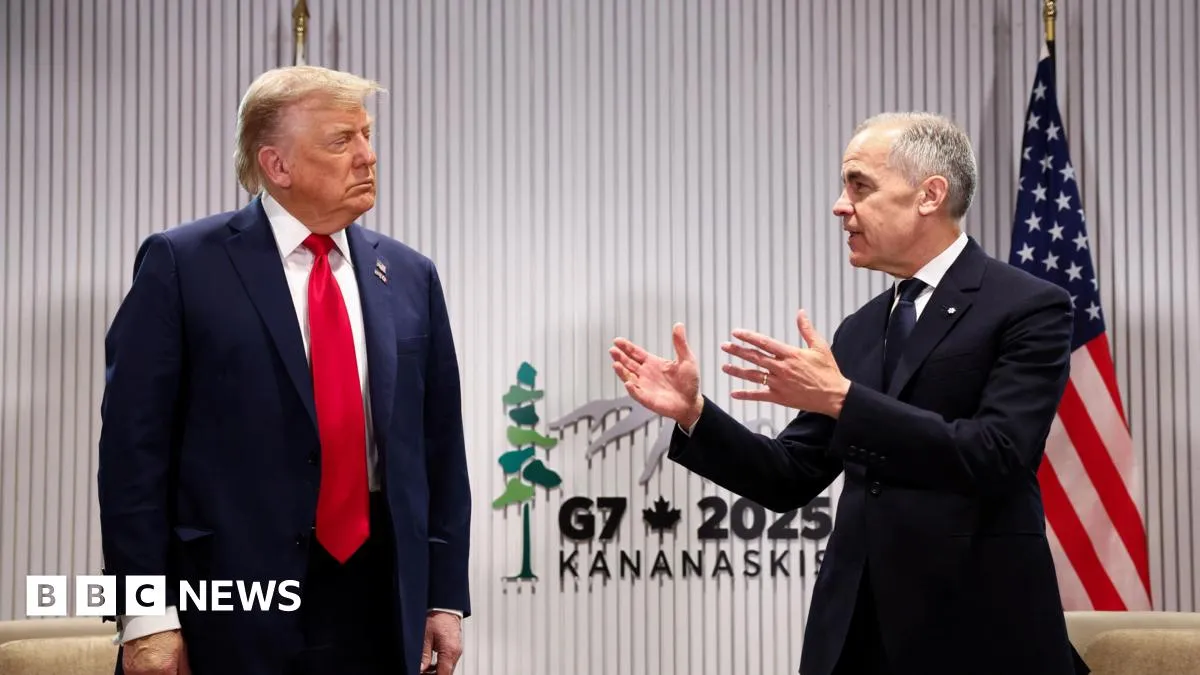
In a significant moment during the G7 summit, U.S. President Donald Trump was photographed with German Chancellor Friedrich Merz. The image was shared by Trump's communications adviser, Margo Martin, on the social media platform X. This meeting follows their previous engagement at the White House on June 5, and both leaders are expected to participate in the official G7 welcome ceremony shortly.
During a news conference with Canadian Prime Minister Mark Carney, Trump reiterated his stance regarding the expulsion of Russia from the G8 in 2014. He attributed the decision to his predecessors, specifically blaming former President Barack Obama and former Canadian Prime Minister Justin Trudeau, although Trudeau was not in office at the time; Canada was led by Stephen Harper. Trump characterized Russia's removal as a misstep, asserting that had Russia remained a member, the ongoing conflict in Ukraine might not have occurred. The decision to expel Russia was made in response to its annexation of Crimea, which international law deems illegal.
As the bilateral meeting between Trump and Carney concluded, trade issues were undoubtedly at the forefront of their discussions. Prior to their meeting, Trump made headlines by declaring himself a “tariff person,” indicating his inclination towards imposing tariffs as a trade strategy. This meeting is particularly crucial given the ongoing trade tensions between the U.S. and Canada, and it serves as an opportunity for both leaders to explore potential resolutions to their trade disputes.
Reporting from the G7 summit, Chief North America Correspondent Gary O'Donoghue highlighted the urgent need for a unified response to the escalating conflict between Israel and Iran. British Prime Minister Sir Keir Starmer indicated a shared desire for de-escalation among G7 leaders, but emphasized the necessity of developing a concrete action plan. Merz suggested that a communiqué would advocate for Iran to be prohibited from possessing nuclear weapons while affirming Israel's right to self-defense, though no explicit mention of de-escalation was made, indicating lingering divisions among the leaders.
In another notable exchange, Trump expressed openness to the idea of China joining the G7, stating, "That's not a bad idea." He quickly redirected the conversation to the historical context of the G7's composition, recalling that it was originally the G8 before Russia's ousting. Trump noted that this exclusion has complicated international relations and suggested that keeping Russia involved might have prevented conflicts like the war in Ukraine.
As the G7 summit progresses, observers are keenly watching the interactions between Trump and Carney. Their previous meeting in the Oval Office showcased a mix of camaraderie and tension, particularly surrounding Trump’s controversial remarks about Canadian sovereignty and tariffs. The current summit offers a platform for both leaders to address pressing trade issues and explore pathways to cooperation.
This G7 summit marks a pivotal moment for Canadian Prime Minister Mark Carney as he chairs discussions with some of the world's wealthiest nations. The agenda, initially focused on the global economy and security, has been overshadowed by the urgent situation in Iran. With trade tensions stemming from Trump's policies and the need for a unified stance on international issues, the summit's success will largely depend on the ability of leaders to navigate these complex geopolitical dynamics.
As the G7 leaders convene in the breathtaking Canadian Rockies, the world watches closely. Will they achieve unity in addressing the multifaceted challenges presented by the Middle East conflict, trade relations, and global security? The next 48 hours will be critical for shaping the future of international cooperation.